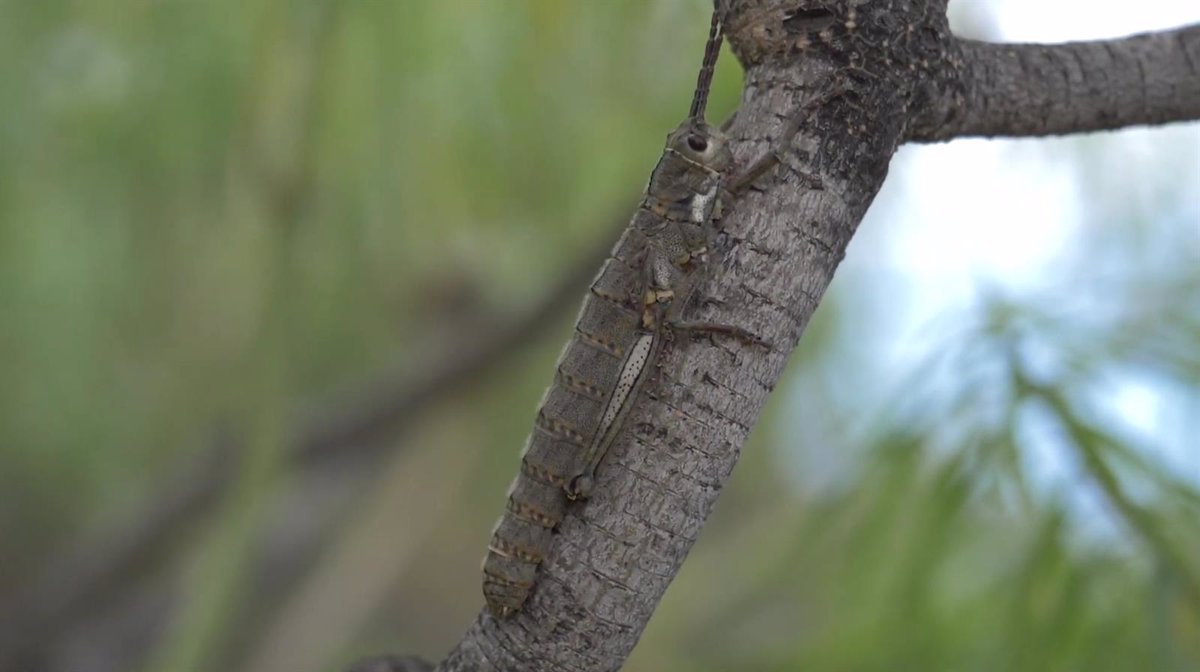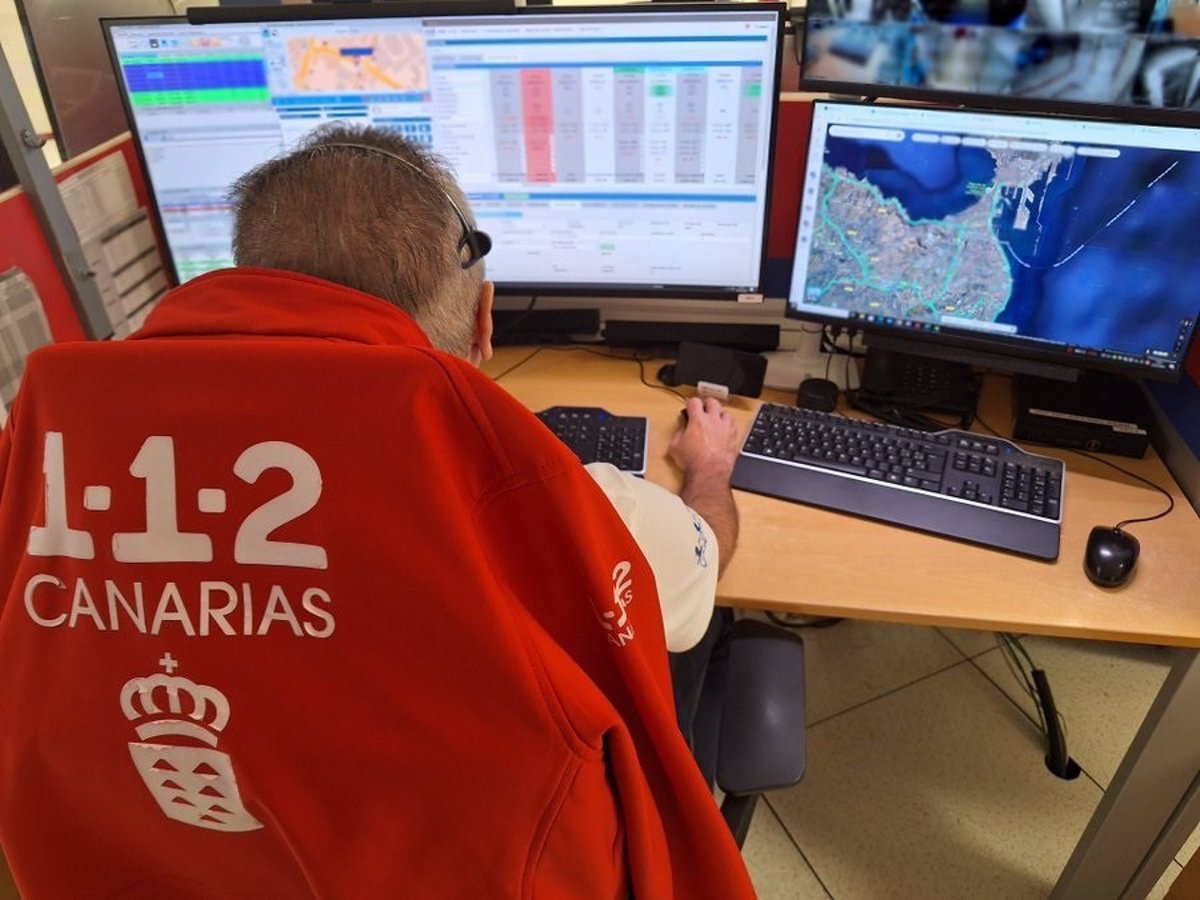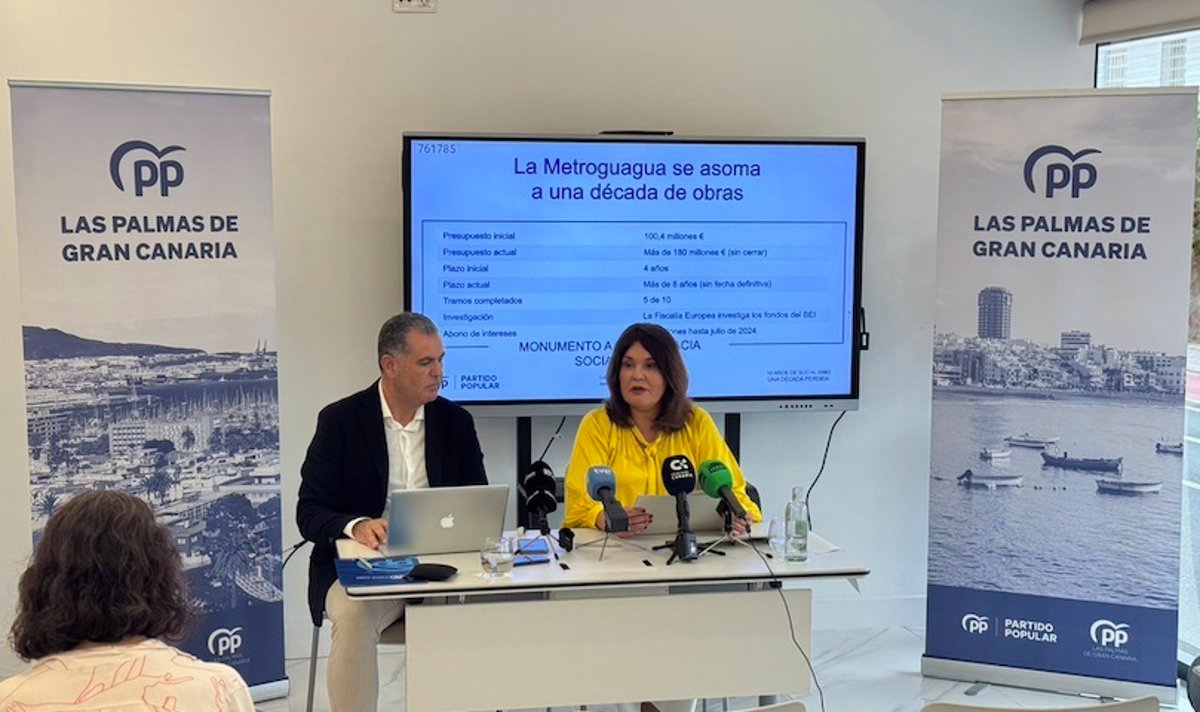
Researchers from the CanBio project, funded equally by the Government of the Canary Islands and Loro Parque Foundation, are evaluating the survival conditions of the «cigarrón palo palmero» (Acrostira euphorbiae) that survives on the southwest coast of La Palma after the eruption of Cumbre Vieja.
The eruption of the ‘Tajogaite’ volcano in 2021 directly affected the habitat of this species, generating great uncertainty about its viability.
«During the initial surveys after the eruption, we were able to detect very few specimens, but this year another group of researchers has identified up to 30 individuals, giving us hope for a possible recovery,» explains Carlos Ruiz Carreira, a professor in the Department of Animal Biology, Edaphology and Geology in the Zoology Area of the ULL and principal investigator of BioTER: Arthropods.
The «cigarrón palo palmero» mainly inhabits tabaibal formations on the coast of La Palma.
Its extremely restricted distribution, low density, and cryptic behavior, meaning it hides among the vegetation at the slightest movement, make it a challenge for researchers.
To detect it, it is often necessary for two people to simultaneously surround a tabaiba.
Faced with these difficulties, the scientific team is developing new non-invasive methodologies, such as acoustic monitoring using sensors that record the females’ calls.
This technology could help locate previously unknown populations and estimate their numbers without altering their behavior.
«It is essential to understand their natural cycles, which may include years of very low abundance followed by population rebounds. Without a long-term series of data, we cannot determine if we are witnessing a recovery or just a temporary fluctuation,» adds Ruiz.
According to the researchers, conserving the «cigarrón palo palmero» is not only about protecting a unique species but also about preventing the progressive collapse of an extremely fragile insular ecosystem.
«In insular ecosystems like the Canaries, losing a single cog can jeopardize the stability of the entire ecological network,» warns Ruiz.
MONITORING NETWORK
For this reason, the CanBio project has established a monitoring network to assess the effects of climate change on the most threatened species in the Canary Islands, as will soon be done with the case of the «cigarrón» through the data collection efforts currently underway.
These studies are crucial in the current context of a global biodiversity crisis.
«In the Canary Islands, there is no official record of any extinct arthropod species, but it is likely that many have been lost without even being discovered,» warns Ruiz, emphasizing that «it is like a fire in a building, if you don’t know where the flames are, you can’t extinguish them.»
In his opinion, «we need data on where vulnerable populations are, how they interact with other species, the effects of invasive species or climate change; without this information, we cannot design effective conservation measures.»
Therefore, the project emphasizes the need for prolonged, systematic, and non-invasive monitoring that allows the observation of real population dynamics over time.
Only in this way will it be possible to differentiate between natural fluctuations and concerning trends, and establish conservation strategies that ensure the viability of unique species like the «cigarrón palo palmero,» emblematic of insular biodiversity and a sentinel of environmental changes affecting the ecosystems of the Canary Islands, as highlighted by CanBio.





